1.1 Background
The political declaration at the first United Nations (UN) high-level meeting on tuberculosis (TB) held on 26 September 2018 included commitments by Member States to four new global targets (1), which were subsequently renewed at the second UN high-level meeting on TB on 22 September 2023 (2). One of these targets is that at least 90 per cent of the estimated number of people who develop TB are reached with quality-assured diagnosis and treatment in the 5-year period 2023–2027 (2).
 Reacción
Reacción